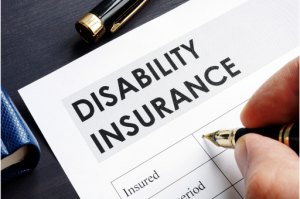
Income and Disability Protection Insurance
 When it comes to your estate, it is important to realize that your ability to earn an income is probably your most important asset. Like all of your other assets, you need to protect your ability to earn an income. Income protection health insurance provides an income if you are unable to work and earn money due to a disability or illness. Although it is also called disability insurance, benefits are available if you cannot work for reasons other than disability. Mortgage protection insurance is similar in that it can pay your mortgage under similar circumstances.
When it comes to your estate, it is important to realize that your ability to earn an income is probably your most important asset. Like all of your other assets, you need to protect your ability to earn an income. Income protection health insurance provides an income if you are unable to work and earn money due to a disability or illness. Although it is also called disability insurance, benefits are available if you cannot work for reasons other than disability. Mortgage protection insurance is similar in that it can pay your mortgage under similar circumstances.
The benefit of a disability policy is to provide a predetermined percentage of your salary as income during the policy’s term. This insurance can complement other types of ‘what if’ insurance which pay expenses, or be an alternative to lump sum insurances like critical illness insurance.
These policies are generally divided into short term disability insurance — usually paying for illnesses of three to six months — and long term disability insurance which pays if the disability is over six months. These times and even the definition of disability and qualifications to receive benefits can vary widely among policies.
Additional Details About Disability/Income Protection Insurance
 Disability and income protection insurance is the most complex type of ‘what if’ insurance. It comes with many options, each appropriate to different people and situations and each being associated with its own benefits and limitations. The options available vary depending on the source. While many types of disabilities and illnesses are covered — such as anxiety and depression, back pain, cancer, chronic pain, diabetes, epilepsy, heart disease, leukemia, Parkinson’s disease, and stroke — uncontrolled diabetes, obesity, ALS, and alcohol or drug-related issues may not be. Women usually can’t be covered for pregnancy-related disabilities if they’re already pregnant when they buy the policy.
Disability and income protection insurance is the most complex type of ‘what if’ insurance. It comes with many options, each appropriate to different people and situations and each being associated with its own benefits and limitations. The options available vary depending on the source. While many types of disabilities and illnesses are covered — such as anxiety and depression, back pain, cancer, chronic pain, diabetes, epilepsy, heart disease, leukemia, Parkinson’s disease, and stroke — uncontrolled diabetes, obesity, ALS, and alcohol or drug-related issues may not be. Women usually can’t be covered for pregnancy-related disabilities if they’re already pregnant when they buy the policy.
There are generally three places to get disability insurance: a group policy from your employer, an individual policy from a private insurance company, or through a federal or state agency.
Group Policy
All employers must offer worker’s compensation for work related injuries, but many will offer other forms of income protection coverage.
Five states and Puerto Rico require employers to provide short-term disability benefits: California, Hawaii, New Jersey, New York and Rhode Island.
Most employers that offer disability insurance as a benefit will pay some or all of the cost of premiums.
Some employers offer disability coverage as a voluntary benefit but don’t pay for it. However, this allows you to buy coverage through your employer’s insurance broker at a group rate.
Other things to consider before signing up for group disability insurance through your employer.
- It is easy to qualify for, but the policy belongs to your employer and will end if you are no longer employed there. If you offer to pay the full premium for your employee disability insurance before you leave your current job, you may be able to keep it.
- Consider supplementing employee disability coverage if your salary far exceeds the cap or you depend on bonuses or commissions, which are not considered part of your salary for insurance purposes.
- If your employer paid the premiums, insurance payouts from this type of policy are taxable.
- You will have no flexibility regarding options or choice of insurance company.
- Your employee disability policy will usually only pay a portion of your base salary and stops at a prespecified limit.
- Your coverage will end if your employer decides to stop providing disability benefits.
Individual Policy
Individual disability insurance can be purchased from an insurance broker or directly from an insurance company.
- Consider buying an individual policy if you are self-employed, or your employer doesn’t offer disability insurance.
- You can do this alone or as a member of a professional group such as a union or society that offers members disability coverage at group rates.
When you purchase your policy directly it will be more expensive, but you may have more options than if you do so as a member of a professional organization.
- You will have a wider choice of insurance companies, can compare them for cost and options, possibly negotiate, and ultimately choose the insurance company that offers the best policy for your needs and budget.
- You can customize the coverage with extra features, such as annual cost-of-living adjustments.

Most individual disability policies provide long-term coverage, although some companies offer short-term policies as well.
Unlike employee insurance where the employer pays the premiums, individual insurance benefits are tax-free if you become disabled.
Individual policies belong to you and are not affected by job changes. You will have coverage as long as you pay the premiums.
Government Policy
If you do not have insurance, disability benefits may be available through some government agencies but the benefits are less and require more effort to receive.
Social Security will pay disability benefits to anyone who has worked long enough and paid Federal Insurance Contributions Act (FICA) taxes, referred to as Social Security Disability Insurance (SSDI).
- You have to apply for SSDI and the application process is complicated and time-consuming.
- You must have reached the work duration and tax threshold, it is difficult to qualify for the benefits, and you are restricted to what they offer.
- The benefits are much less than those with other insurance. The average monthly disability benefit in 2023 is $1,483, and the duration of payouts is usually more limited. This amount is not based on your household income or the severity of your disability.
- You can apply for Supplemental Security Income which pays additional benefits based on financial need.
State disability programs are offered in California, Hawaii, New Jersey, New York and Rhode Island. State programs only provide short-term disability coverage, typically up to six months.
Cost
The annual cost for an individual long-term disability insurance policy typically ranges from 1% to 3% of your annual salary. There are a number of factors affecting the cost that you should be aware of.
- Your premiums will increase as you age and with the number of health problems you have.
- Women tend to have higher premiums.
- You will have a higher premium if you smoke or work in a job with a high risk of injuries.
- The broader the definition of disability used, the higher the premium. The more disabilities that will make you eligible for benefits, the more likely you will get one and use the policy.
- You can reduce the premium by increasing the waiting period (also known as the elimination period) before you begin to receive benefits.
- The more income you want to protect, the higher the premiums.
- The longer you expect to receive the benefits if you become disabled, the higher the premiums.
- Additional features such as cost-of-living adjustments to protect against inflation increase the premium.
Other Considerations
There are more factors to consider when creating your policy, many that are in addition to the considerations when choosing other types of ‘what if’ insurance.
You must choose between short-term or long-term disability insurance.
- Short-term policies usually pay for disabilities/illnesses of three to six months, sometimes up to a year, while long-term policies provide benefits for at least six months. Benefits will end when the disability ends. Benefits would also end after the duration specified in the policy or at retirement age, whichever is sooner, even if the disability continues.
- The other major differences are that with short-term policies the percentage of income benefits are higher — typically 60%-70%, compared to 40%-60% with long-term policies, the premiums are lower, and they may have a shorter waiting/elimination period.
- Most policies are long-term, as long-term disabilities are more common.
You will need to decide what percentage of your income you want to be covered. You should attempt to replace enough of it to maintain your lifestyle if you become disabled and cannot work.
- Determine the amount and select a percentage of your income that will provide this monthly benefit, or the highest amount you can afford if you are unable to reach that level.
- The company will have their own percentage limit that is typically based on how long you will need the benefits. The limit may be as high as 75% of your income for short-term policies and drops the longer you need the benefits. This is true even if you combine all your coverage — companies will ask about the details of any other disability policies you have.
You can have some control over the elimination period, which is the number of months you wait between becoming disabled and the policy to begin to pay out.
- The typical elimination period for long-term policies is 90 days but you can choose shorter or longer periods.
- Short-term policies usually have shorter elimination periods, some as short as two weeks.
- The longer the elimination period, the lower the insurance premium.
- If you become able to work before the elimination period is over, you will not receive a benefit.

You may be able to choose between being considered disabled if you can no longer perform your specific job (own occupation) or if you are unable to work at all (any occupation). The labels refer to the level of disability needed to get benefits. In general, your level of disability would be higher if you are unable to work at all.
- The “own occupation” option is designed to maintain an income consistent with your current earnings. Because there are usually specific skills needed for an occupation, the level of disability needed to qualify for benefits is usually lower. For these reasons, it is the more expensive option. If you choose to work another type of job, your salary will be deducted from your benefits, keeping your income at the same level it was before you started the new job.
- Since the level of disability necessary to be unable to work at all is less likely to happen you would be less likely to qualify for benefits. Because of this the “any occupation” option is less expensive and unlikely to restore your level of income.
- An even more restrictive level of disability is being unable to perform activities of daily living, but it would not be a level you would want to use to qualify for benefits since this level of disability rarely occurs.
Another option is choosing between a “non-cancellable” policy and a “guaranteed renewable” policy.
- A non-cancellable policy prevents your insurer from canceling your coverage. They are also not allowed to raise your premiums. This option requires an initial medical exam which will affect your premiums if you have health problems.
- A guaranteed renewable policy prevents your insurer from canceling your coverage as long as you pay premiums. Premiums can be raised on a class or group of insured people who have the same policy, work at the same place, or share another non-risk-associated characteristic. These types of policies are usually offered through your workplace and no medical exam is needed.
You can opt for a constant benefit or a benefit that increases with inflation and/or salary increases, such as raises or a cost of living adjustment, by increasing the percentage of your income that you are entitled to.
